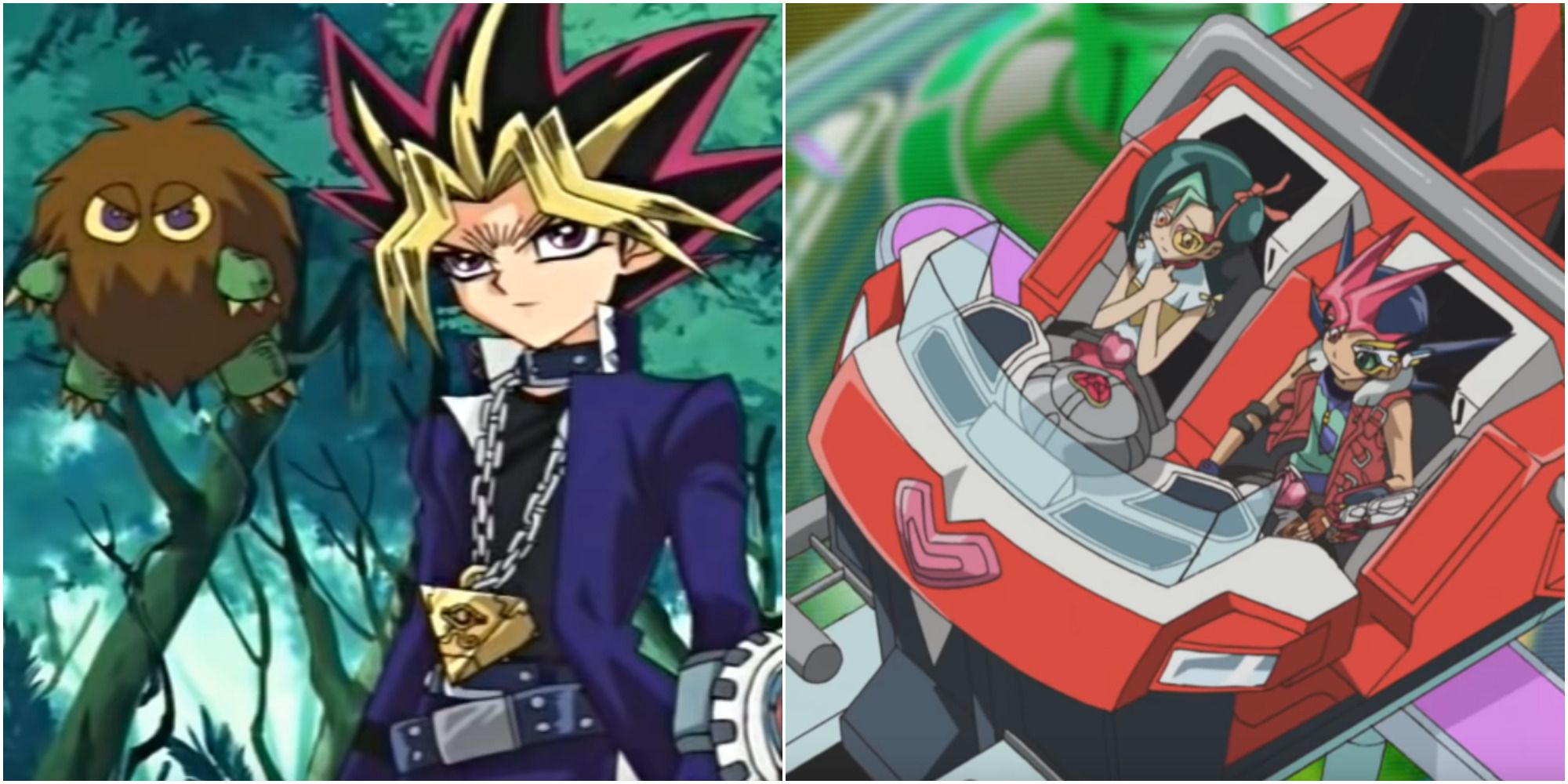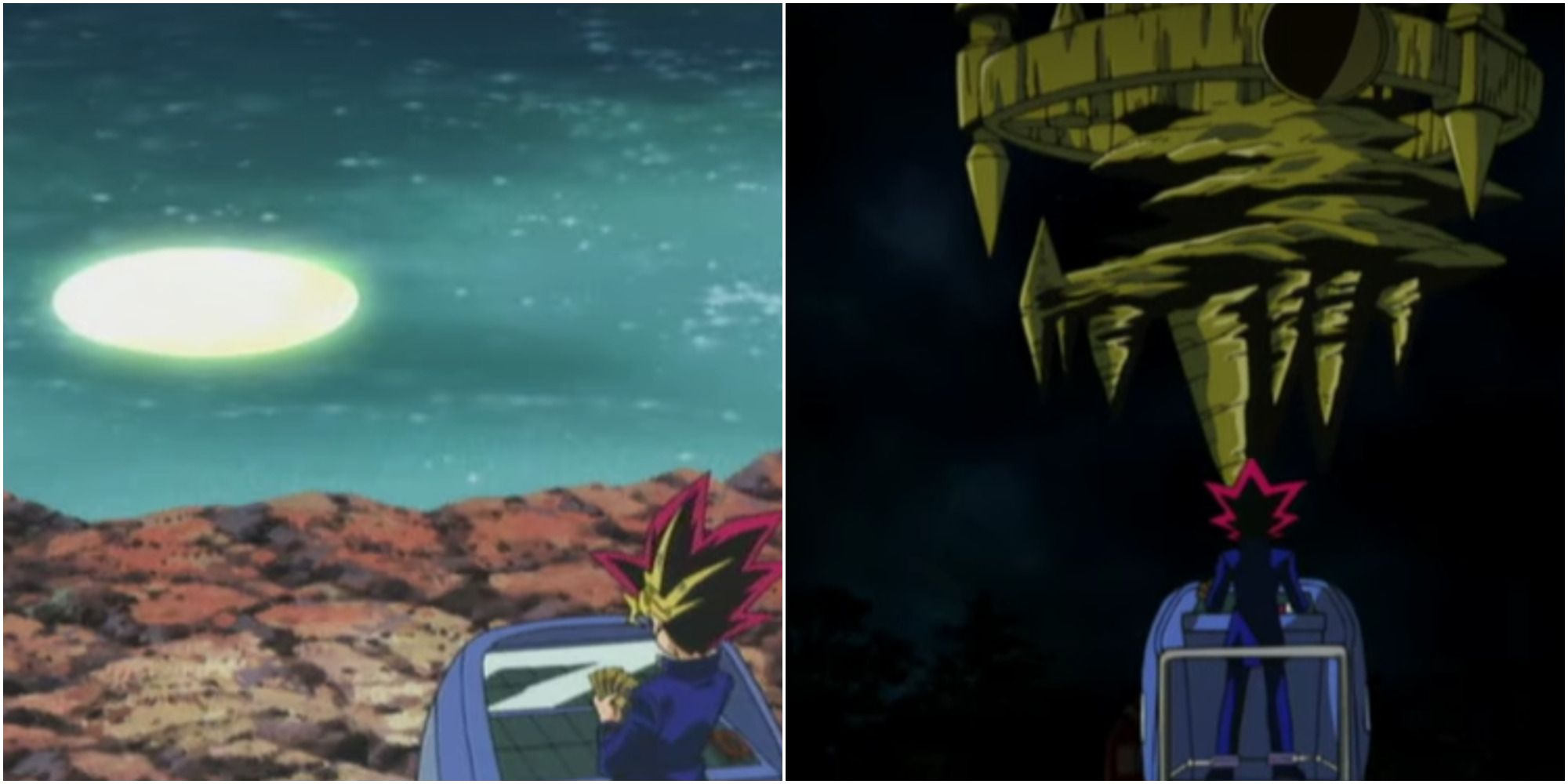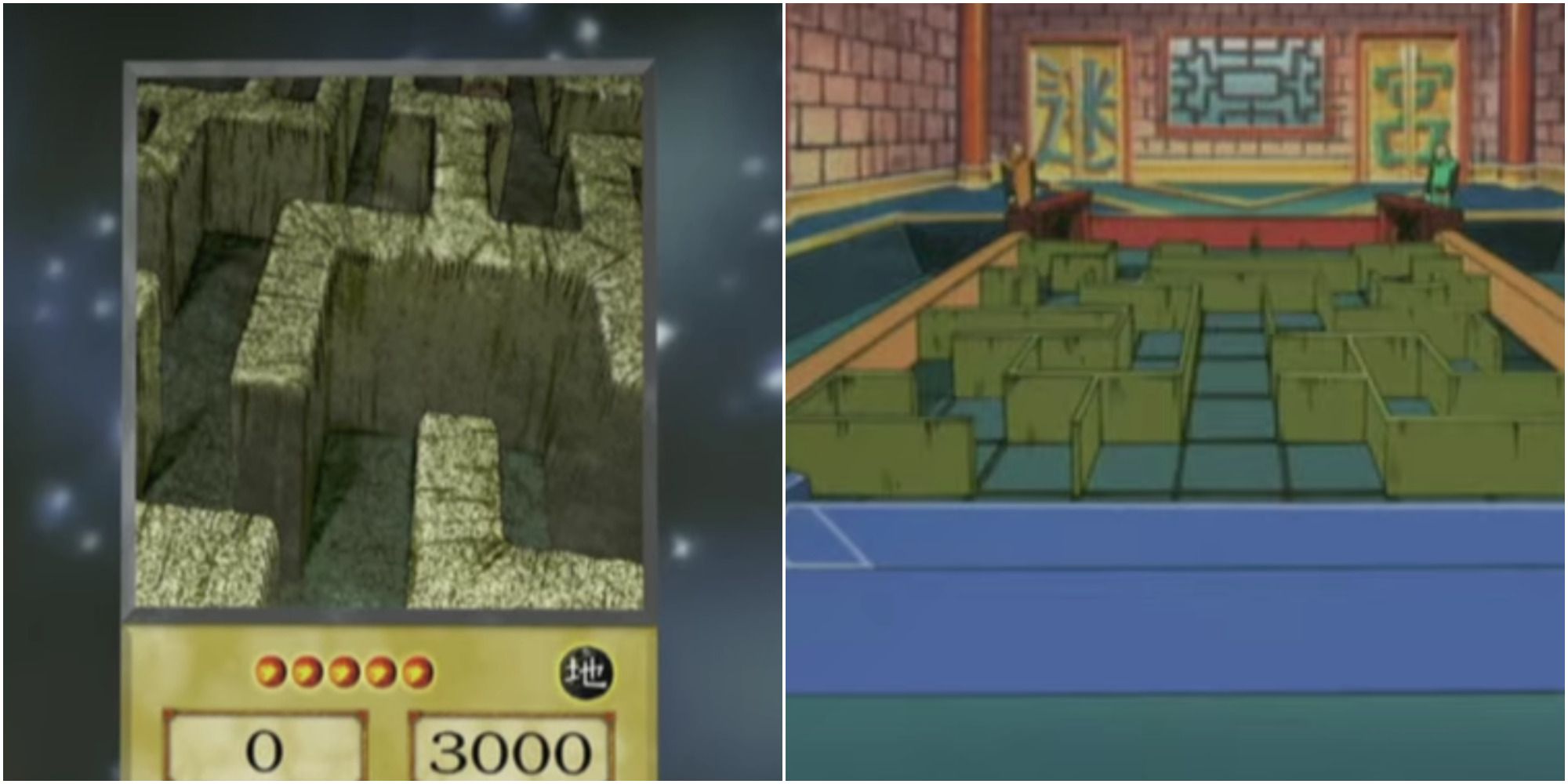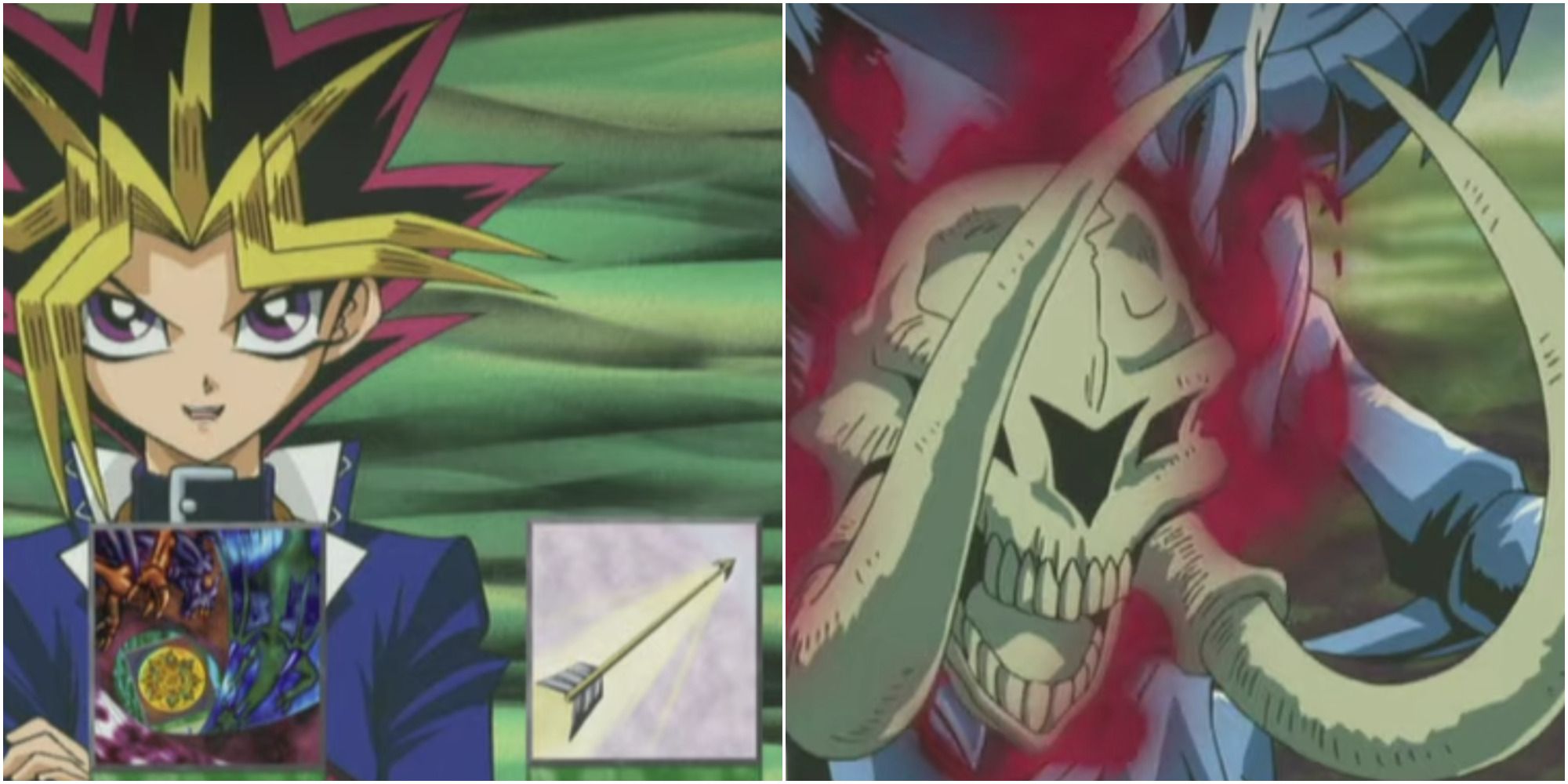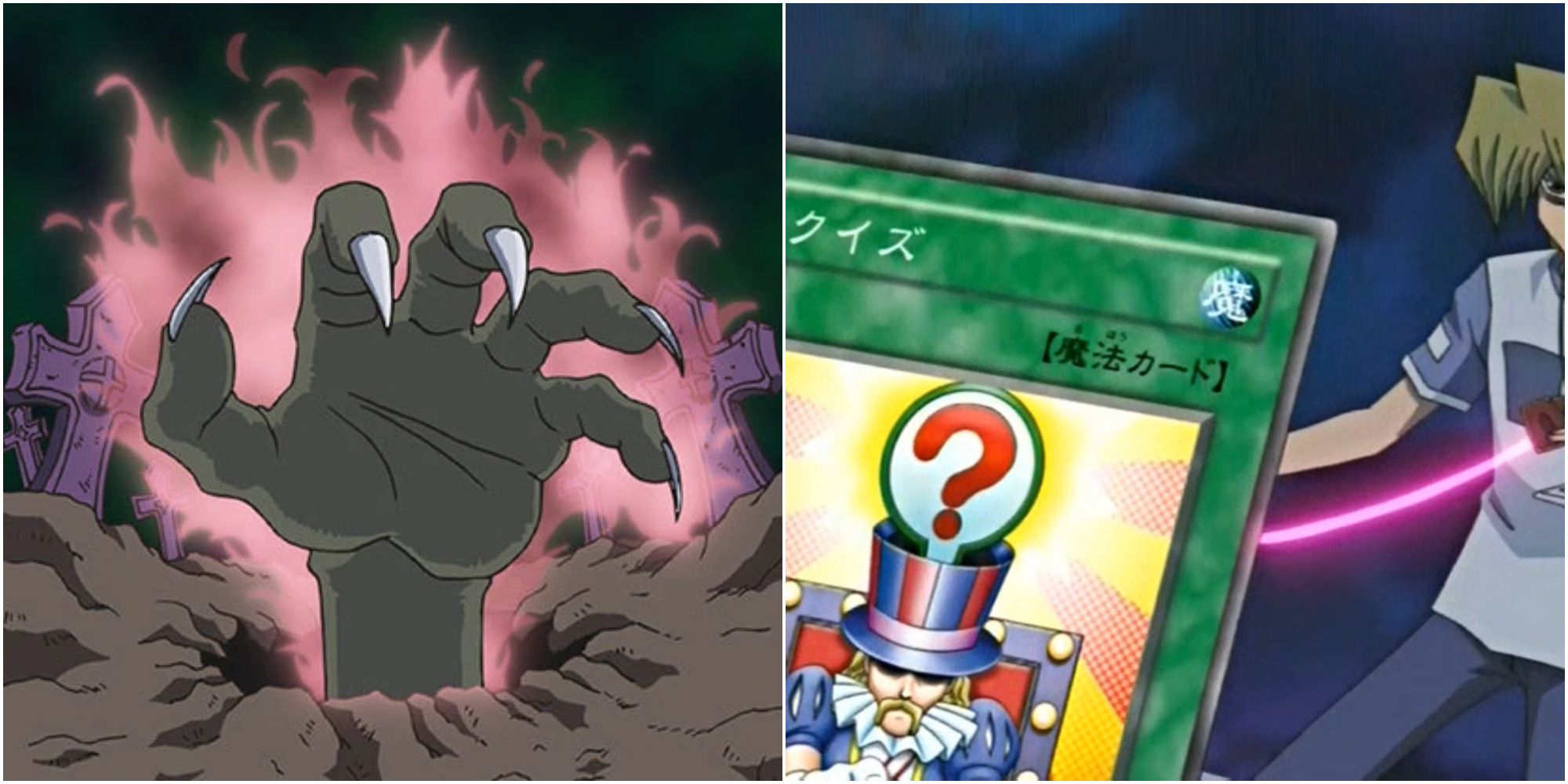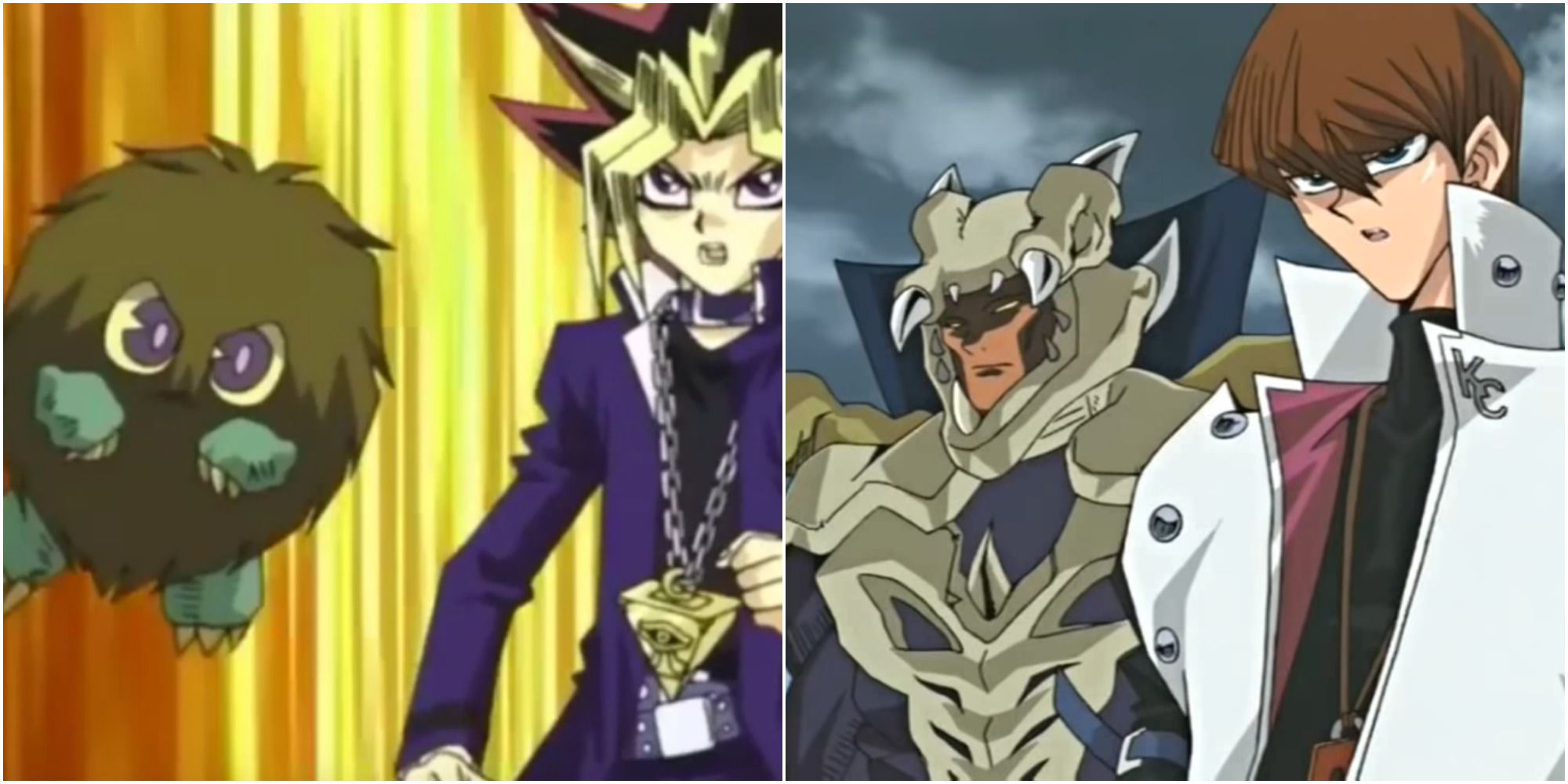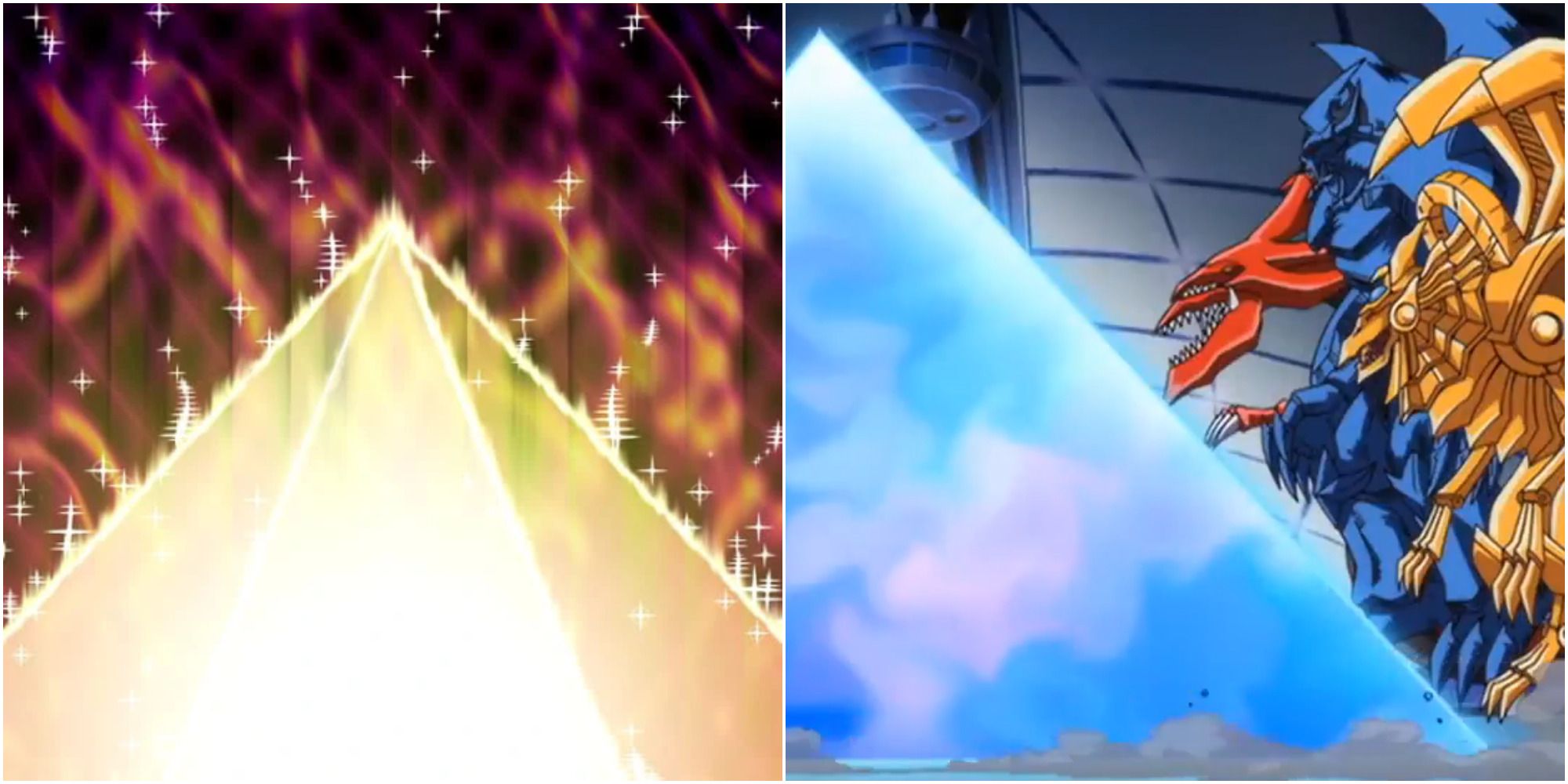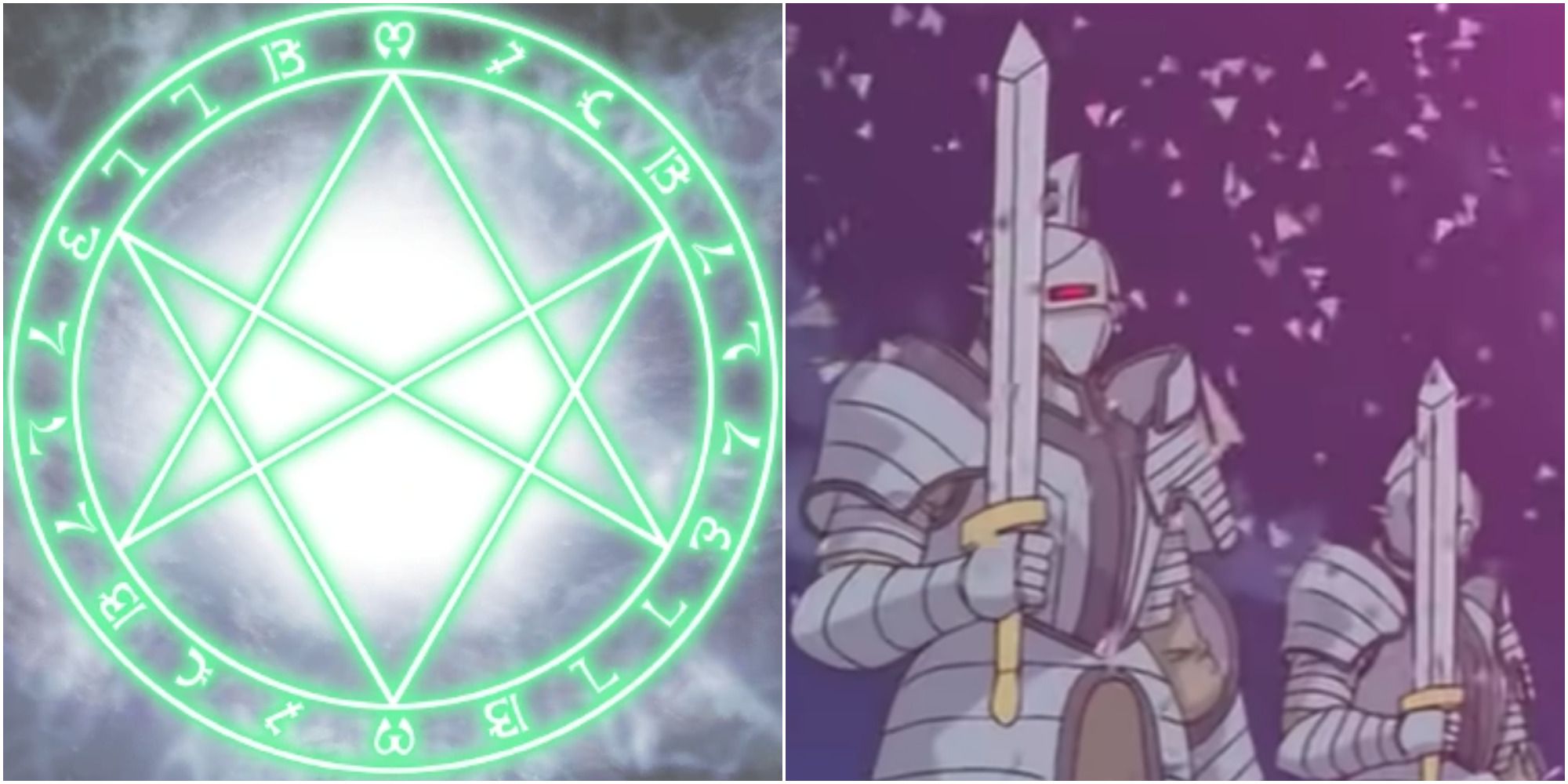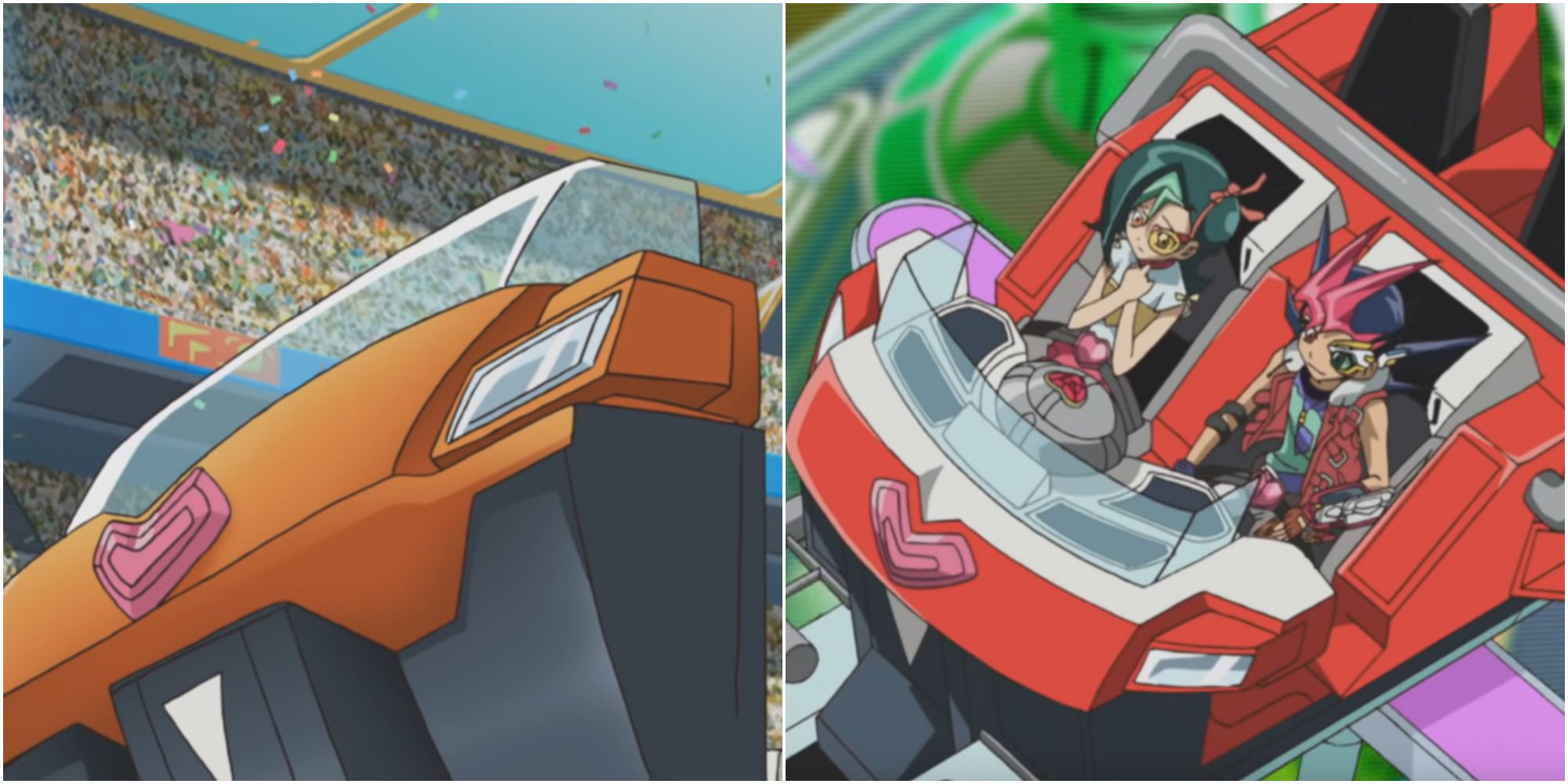The original Yu-Gi-Oh! manga and anime series was released before the internationally popular trading card game, and at first didn't even revolve around it. Duel Monsters, or Magic & Wizards as it was first called, was just one of the many games they played it the series, taking inspiration from Magic: The Gathering as a "popular card game from America."
Because of this, the rules in the anime series differ from those of the official trading card game, and feature some unique mechanics, many of which were never added to the card game or any of the video games based on it.
8 Hiding Multiple Monsters On The Field With Various Cards
While Magical Hats is a well-known staple of Yugi's deck that can hide one of his monsters, it isn't the only card capable of doing so, at least in the Duelist Kingdom arc of the Duel Monsters anime series. Both Umi and Castle Of Dark Illusions could hide all monsters on the opponent's side of the field as long as they were the correct attribute or type. It's not a surprise this has never been replicated in the games since not being able to see the opponent's monster is already covered by placing them face-down, and there are a variety of other cards that prevent the opponent from attacking.
7 Labyrinth Duel
In the first tag team duel of the Duel Monsters anime series, Yugi and Joey face off against the Paradox Brothers, who summon Labyrinth Wall, and although it is a monster, it is treated more like a Field Spell Card. Labyrinth Wall turned the field into a 9x9 grid, could be shifted using the Magical Labyrinth Spell Card, and allowed monsters to move a number of spaces equal to their level. There were also several other rules specific to the duel itself, and Kazuki Takahashi even made a real version. Still, it was never replicated in the games, although Duelist Of The Roses came close since it had some similarities.
6 Force Fusing An Undead Monster With A Living Monster To Decrease Its Attack Points
One of the most infamous moves in the Duelist Kingdom arc is when Yugi uses Living Arrow so that he can use Polymerization to fuse his Mammoth Graveyard with Kaiba's Blue-Eyes Ultimate Dragon, causing the latter to decay and lose 1200 attack points each turn. Living Arrow doesn't exist in real life but is considered the anime counterpart of Spell-Shattering Arrow, which has an entirely different effect. Years later, Super Polymerization would have a similar effect to Living Arrow, but it doesn't allow the player to fuse any two monsters together if the result isn't an actual fusion monster. That being said, if Living Arrow was present in any game, it would make Zombie decks one of the strongest of all.
5 Face-Down Graveyard
According to the Battle City rules, players cannot look through their opponent's Graveyard, and cards sent there are placed face-down. Joey used this rule to his advantage by playing the Spell Card Question and asking Marik what card was sent there first. Of course, he didn't know it due to a mixture of the rule, Question's effect, and because it was discarded by Helpoemer's effect earlier in the duel.
Question's effect is the same in the anime and actual card game, but it's interesting to note that in the anime, players are constantly testing their memory when they take a card from one of the Graveyards.
4 Deck Masters
In the Virtual World filler arc of the Duel Monsters anime series, a new mechanic known as Deck Masters, was introduced. A Deck Master is a single card selected by each player that can help them during the duel by using the card's Deck Master ability. The Deck Master isn't placed on the field unless it has been Special Summoned and instead stands by the player. If the Deck Master is destroyed once placed on the field, then that player loses the duel. The Skill Card system and Skill system in Speed Duels and Duel Links have some similarities but are based on anime characters instead of the cards themselves.
3 Pyramid of Light God Card Removal
In Yu-Gi-Oh! The Movie: Pyramid of Light, the titular Trap Card's only in-game effect is that it removes all God cards from play, preventing Yugi from using his recently summoned Egyptian God monsters against Kaiba and, later, Anubis. Pyramid Of Light's effect has absolutely nothing to do with the Egyptian God cards in the actual card game. Instead, it banishes Andro Sphinx and Sphinx Teleia from the player's side of the field if Pyramid Of Light itself was face-up and removed from the field. Pyramid Of Light's actual effect is also one of several methods that can be used to summon Theinen the Great Sphinx.
2 The Seal Of Orichalchos Summoning Monsters In The Spell & Trap Zone
In the Waking The Dragons filler arc of the Duel Monsters anime series, a new Field Spell, known as The Seal Of Orichalcos, was introduced. While the official card wasn't printed until years later and had different effects than its anime counterpart, one of the effects the anime version did have was that it let the player use their Spell & Trap Card Zone to summon monsters in addition to their Monster Zone.
Monsters summoned in the Spell & Trap Card Zone could also not be attacked as long as there was a monster in the player's monster zone. This would allow the player to have up to ten monsters on the field at once, a clearly unfair advantage.
1 Duel Coaster
In the Yu-Gi-Oh! Zexal anime series, one of the challenges in the finals of the World Duel Carnival is the Duel Coaster, a roller coaster players duel each other on with its own unique set of rules. The Duel Coaster also featured sections of the track where specific Spell and Trap Cards would be activated once the coaster reached them, adding a more random element to the game. If a player lost, they would be ejected from the coaster; but a parachute would also deploy to provide a safe landing. Besides the Duel Terminal arcade series Yu-Gi-Oh! Zexal also only had two Nintendo 3DS games during its run, and the Duel Coaster or similar mechanics never had the chance to be used.

